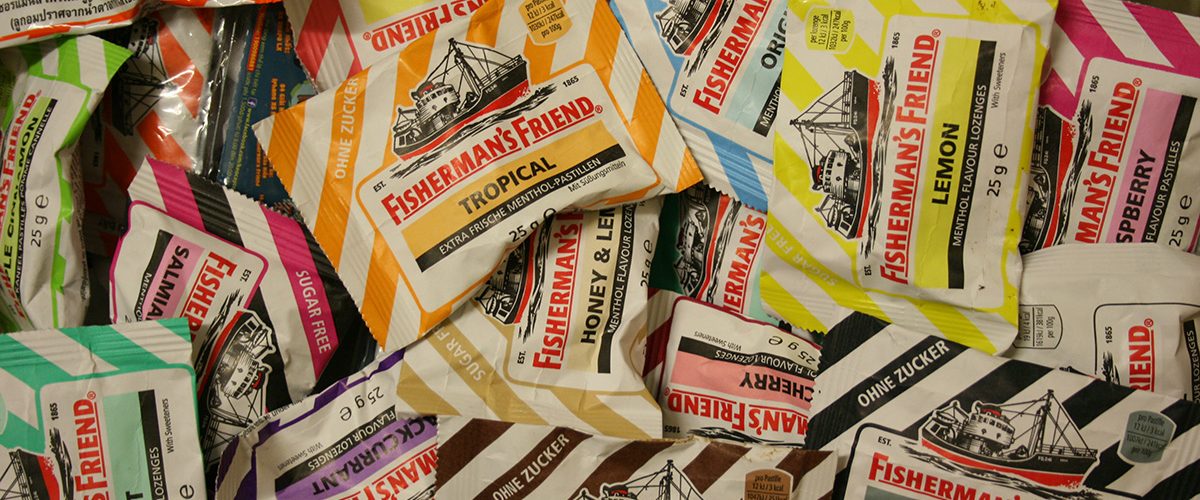One day in June, taking advantage of the ease of lockdown, we decided to have a day out in Thornton Cleveleys. We took a wrong turn and found we were actually heading for Fleetwood and so decided to visit. I would expect that most Northerners recognise the name of this Lancashire coastal town, which can be found at the northwest corner of the Fylde, but I for one have never taken the time to explore its history. Scanning through the internet I found so many interesting facts!
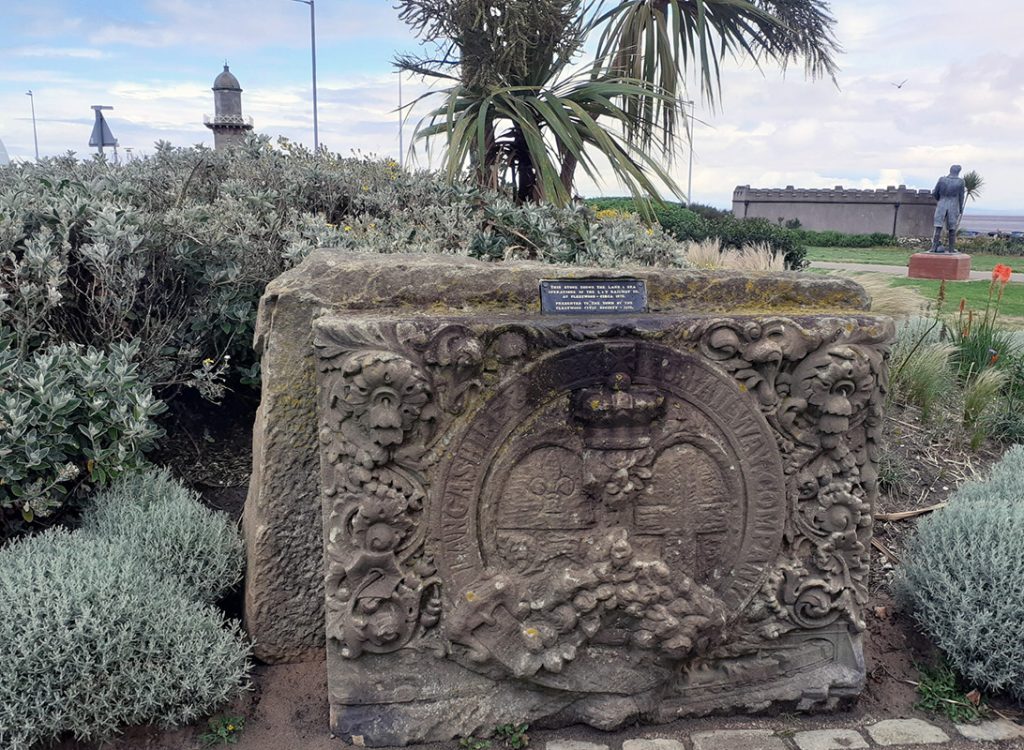
In 1086, the land on which Fleetwood now stands was deemed in the Doomsday Book as part of the ‘Amounderness Hundred’, one of the six subdivisions of Lancashire.
During the reign of Henry VIII, a manor house situated at present-day Rossall, in the southwest of the town, was in the possession of the Allen family, but not for long. The Allens were prominent Roman Catholics, and Henry VIII repossessed the land. It was ultimately sold to Thomas Fleetwood, a senior finance executive of the Royal Mint, and the land would remain in the family for 300 years. Thomas’ son Edmund expanded the manor into Rossall Hall and many decades later this was to become Rossall School which still exists today.
By the 1830s, the house and estate were in the ownership of Edmund’s descendant, Peter Hesketh, MP of Preston and High Sheriff of Lancashire. Hesketh an entrepreneur, he believed that the sheltered harbour and views over Morecambe Bay gave the area the makings of a busy seaport and popular resort for the less affluent.
At the time there were no rail links between London and Scotland, so, he set about encouraging a railway link from Preston. With a new career in Parliament to prepare for, he engaged Frederick Kemp as his agent – this appears to have been the beginning of his downfall. Hesketh originally considered naming the new town Wyreton or New Liverpool, but when he was later knighted, he petitioned Queen Victoria to add his mother’s maiden name ‘Fleetwood’ to his own name. Well who wouldn’t want a town named after them?
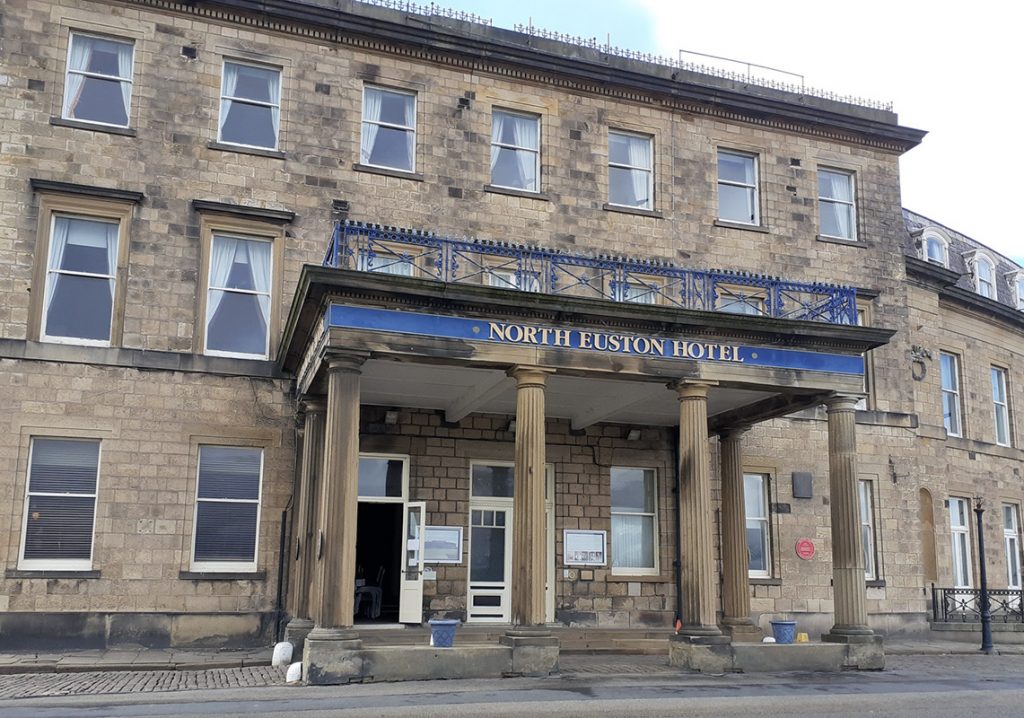
The railway initiative alone was a momentous task to take on, and inevitable delays ensued. He also recruited the prominent architect, Decimus Burton (now that would make a great name for a town) to lay out what would be the first planned town of the Victorian era. The construction of the first buildings and the railway line began in 1836.
By 1838, Hesketh-Fleetwood had run into serious financial difficulties, with costs for the railway in particular ultimately exceeding £300,000. He had numerous financial arguments with Frederick Kemp. Depressed, he gradually withdrew from the project, and by 1844 he had been obliged to sell much of his estate. In 1847 virtually bankrupt, Hesketh-Fleetwood retired to Brighton, giving up his parliamentary obligations. Meanwhile, Kemp’s influence expanded.
The single railway line from Preston to Fleetwood opened on 15 July 1840, following the formation of the Preston and Wyre Railway, Harbour and Dock Company.
The North Euston Hotel, still considered Fleetwood’s crown jewel by many, is a fine semi-circular building now providing 53 on suite bedrooms. On opening in 1841 it provided the perfect venue to serve overnight guests making the railway journey from Euston Station in London. At the time, there was no direct rail route from London to Scotland along the west coast, the point of departure for the steamers to Scotland was close to the hotel. Travellers would arrive at Fleetwood and take the sea ferry to Ardrossan, then travel by rail to Glasgow. Breakfast at the North Euston was two shillings, a bedroom four shillings a day.
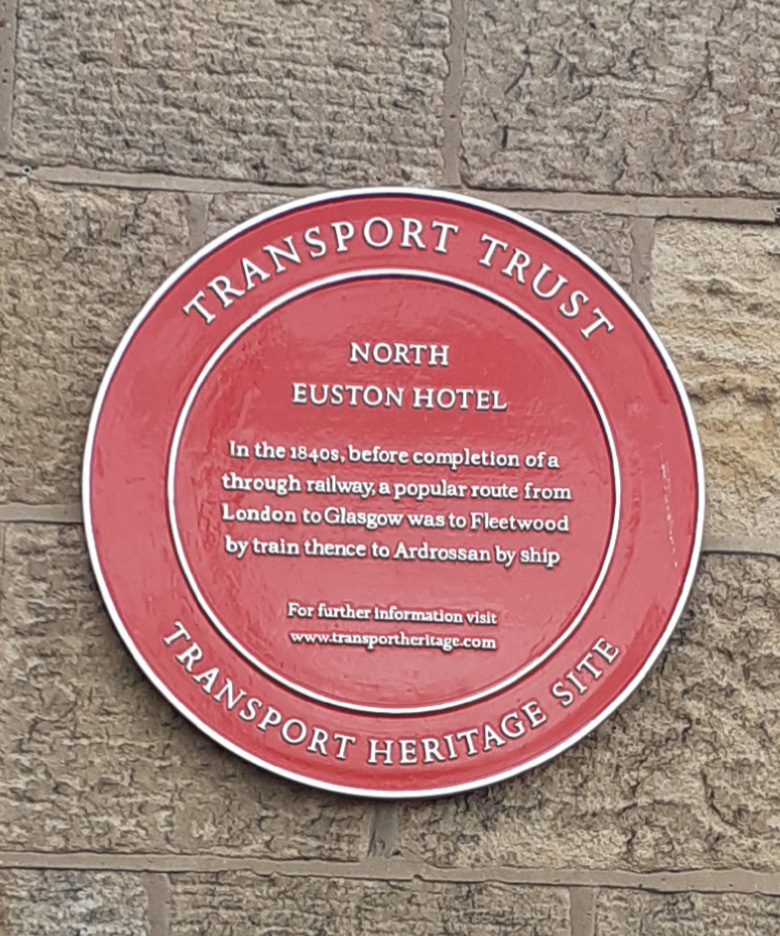
Wealthy visitors stayed in this hotel and surrounding fashionable area for three weeks to three months. During Whitsuntide Week of 1844 thousands of trippers travelled to Fleetwood on the half fares offered by the railway company. In 1846 the largest Sunday School trip was a train of 56 carriages, pulled by two engines, carrying 4,200 people.
In the 1890s, the construction and expansion of rival cargo ports and the building of the Manchester Ship Canal heralded the decline of Fleetwood’s prominence as a cargo port. But this was more than offset by a period of rapid expansion of the fishing industry and Fleetwood’s position as one of the three major fishing ports in England was cemented.
Fleetwood Pier, the last seaside pier to be built in the UK, opened in 1910. After withstanding a fire in 1952, sadly a fire in September 2008 led to its demolition later in the same month.
The first fully automated telephone exchange in Britain was put into operation to serve the town on 15 July 1922!
The 1920s, the fishing industry was at its height, employing over 9,000 people. Over the next few years, the sea front along the north shore was developed in resort fashion, to encourage visitors for whom the brashness of Blackpool was too daunting.
Fleetwood boasts three lighthouses, one now in disrepair. In their heyday, they safely guided thousands of ships through the Wyre channel and into port. These bastions of the sea were unable to assist the town when it was hit by a huge flood in October 1927, which put 90% of the area of the town under water.
Sadly, Fleetwood was a hostage of the 1960’s and 70’s Cod Wars, over fishing rights between Iceland and the UK. As a result, commercial fishing has seriously declined. In 1982, the last deep sea trawler left the town and now only inshore fishing boats fish out of the port. Trawlers registered in other places can still be seen taking advantage of the popular fish market were local restauranteurs source all of their produce daily at Fleetwood market. Fleetwood still has a smattering of remaining small ‘day boats’ and so the auction hall is still thriving with fish caught from them.
A beautiful and poignant reminder of lives lost and saved is undoubtably the pair of bronze figures, designed and sculptured by Anita Lafford. It stands on the promenade, by the pier, depicting the idea of families welcoming back the fishermen from sea. The statue was provided by Fisherman’s Friend assisted by Wyre Borough Council.
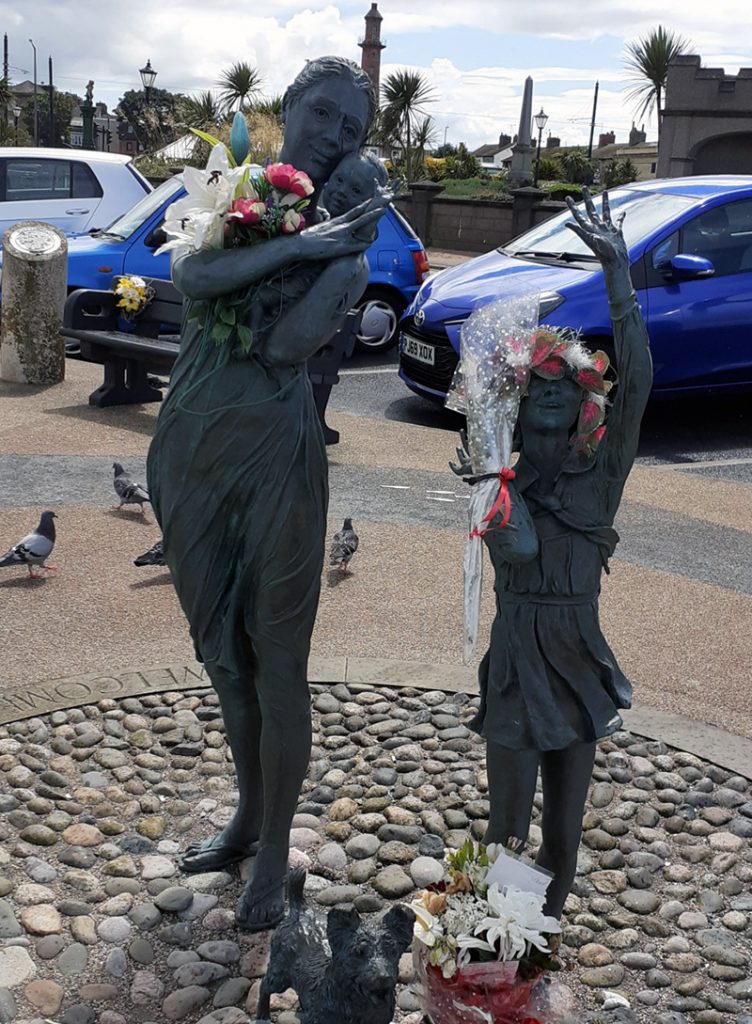
In 1995, the deserted Wyre Dock was developed into a marina, the then derelict dock landing area was developed into the retail shopping centre ,originally called Freeport Fleetwood. In 2018 it became ‘Affinity Lancashire’ personally I would have preferred ‘Wyre Dock’ but then I wasn’t asked!
The town’s most notable employer today is the firm, Lofthouse of Fleetwood, a British family-owned company based in Fleetwood. It was headed by Tony Lofthouse until his death in 2018; he was the fourth generation of the Lofthouse family to head the company. The company’s most famous product is the Fisherman’s Friend lozenge, which is exported around the world.It remains a family business and produces over 5 billion lozenges annually which are available in over 100 countries worldwide. U.K. variants include Original Extra Strong, Original No Added Sugar, Aniseed, Sugar-Free Blackcurrant, Sugar-Free Spearmint, Sugar-Free Honey & Lemon, Sugar-Free Cherry, Sugar-Free Mint and Sugar-Free Lemon.
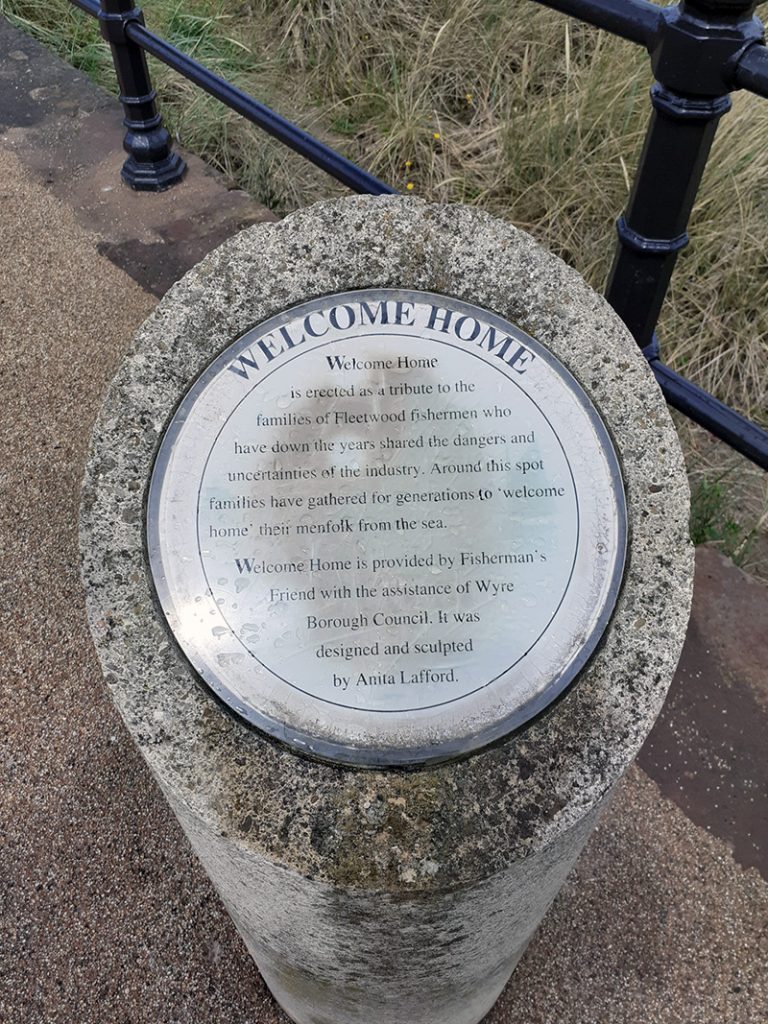
As frequent travellers across the globe, my husband and I have always found the sight of Fisherman’s Friends lozenges on sale abroad, somewhat comforting. It all started when we noticed shelves and shelves of the brand, in an airport on the west coast of America, who knew that stars flying in to their Hollywood mansions might swan past or stop and buy from a whole array of various flavours of Fisherman’s Friends. Many flavours available that we certainly haven’t come across in the UK.
These days we silently smile and nod to each other when we see the white packets lined up patiently waiting to be bought. Within our PR business we have clients from across the globe and finding out about their choice, whether it’s the salty version liked by our Stockholm clients, or the original which our Polish friends say are ‘cool’ or as we know our USA contacts, they just love them all! On meeting a client from the far east, he brought me a packet as a gift! For us, this little lozenge has become an almost shared value between us.
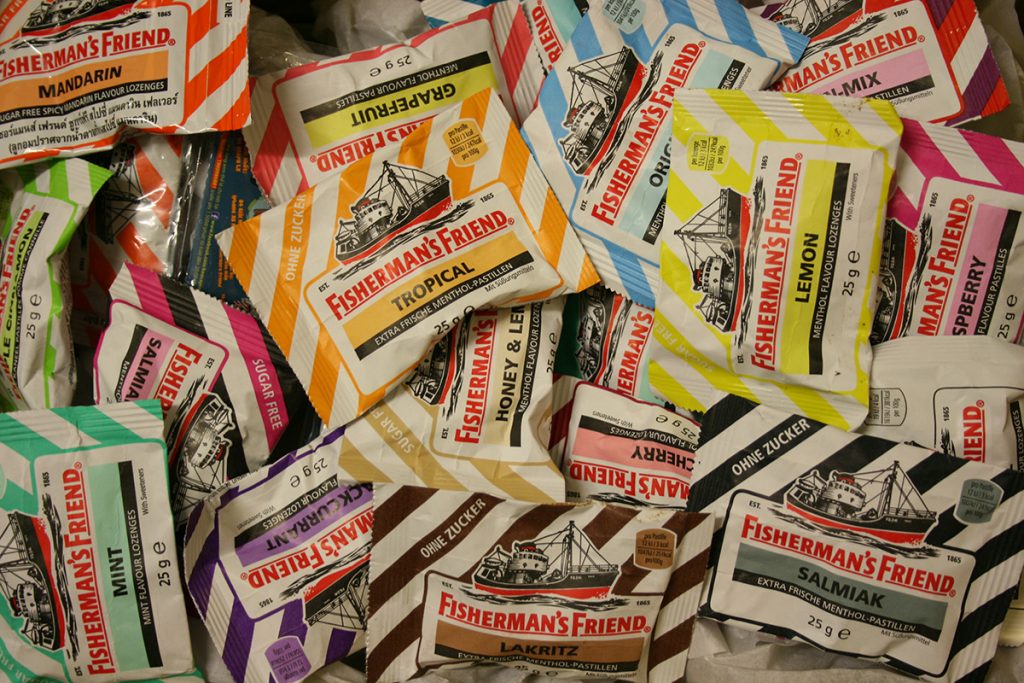
On our sojourn we passed the Lofthouse of Fleetwood HQ. I wonder how many visitors across the years have passed in their cars and pointed excitedly at the famous Fisherman’s Friend signage on the building?
From Spring 2020 until 28th November 2020 there is a temporary exhibition about all things Fisherman’s Friend installed at Fleetwood Museum and we sincerely hope we can visit before then and find out more about the fascinating story of this world famous lozenge. At the time of writing, Covid-19 restrictions were lifted in August and the Museum is once again open.
Fleetwood Museum is an important component of the very fabric of Fleetwood and explores the rich history of this seaside town. The museum occupies Fleetwood’s oldest complete building. It was originally the Custom House, opened in 1838 it’s one of the oldest buildings still in use today. When Fleetwood became a Municipal Borough in 1933 it became the Town Hall. After being threatened with closure by Lancashire County Council, the museum reopened in April 2018 under the stewardship of Fleetwood Museum Trust – an independent charity. The museum is proud to receive annual funding from the people of Fleetwood through Fleetwood Town Council. Fleetwood Museum is largely volunteer run by passionate local people and is a true community museum and may it always remain so.
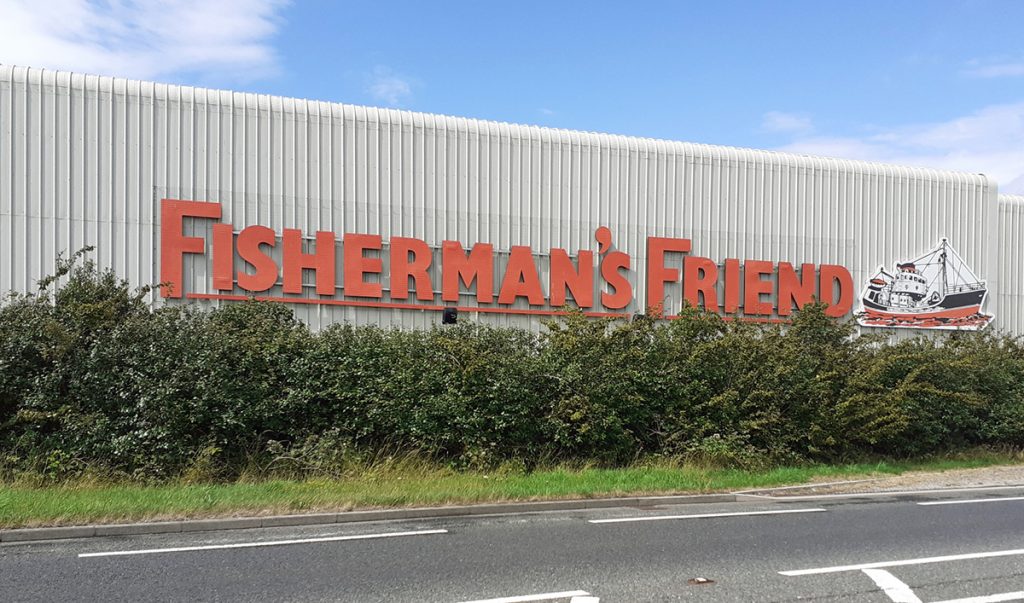
So, back to our beloved little lozenge, loved by many, including my family and reputedly the late Dame Margaret Thatcher also. In 1865, Fleetwood pharmacist James Lofthouse created his own menthol and eucalyptus liquid for local fishermen to take at sea, giving relief in the harsh and freezing conditions of the north Atlantic. Later made in lozenge form, what came to be known as ‘Fisherman’s Friend’ had been born. Originally sold in the local Lofthouse Chemist shop in Fleetwood, Fisherman’s Friend now produces over 5 billion lozenges annually in the Fleetwood factory, sold in over 100 countries around the world.
The Museum exhibition tells the inspiring story of Fisherman’s Friend. It explores the original idea and creation of the product in 1865, charting the development and growth of this proud Fleetwood business. Ben Whittaker, Museum Manager, Fleetwood Museum, says: “We are really excited to be working with Lofthouse of Fleetwood Limited to create this exhibition. Fisherman’s Friend is a real success story for the town of Fleetwood which we want to celebrate.
“They have a fascinating history – James Lofthouse developed the product in response to demand from local fishermen, and their Chairman, Doreen Lofthouse OBE continues to be instrumental in developing Fisherman’s Friend today. Visitors to the exhibition will also be surprised to know how popular Fisherman’s Friend is around the world – with some exotic flavours only available overseas.”
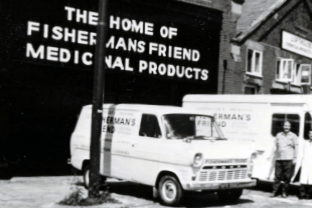
Having read and researched more about Doreen Lofthouse, I believe a Damehood rather than an OBE would have been a more appropriate honour!
I am told that the exhibition features objects charting the history of Fisherman’s Friend and examples of Fisherman’s Friend memorabilia from over the years. It also reveals, I am told, some fascinating secrets such as the story behind the famous fishing boat logo something I personally cannot wait to know.
The Lofthouse family are supporting the exhibition and Duncan Lofthouse. Managing Director at Lofthouse of Fleetwood Limited, says: “Over 150 years since James Lofthouse produced our first lozenge, Fisherman’s Friend is still a family-owned business. Fleetwood has always been – and always will be – at the heart of our story. That’s why we are delighted to be supporting Fleetwood Museum’s local exhibition that goes back to our roots and highlights historical milestones.”
My husband Bob and I are thankful that we took a wrong turn that day, in June this year, and began to discover more about the bygone and present charms of Fleetwood. Perhaps one good product of Covid-19 is that we cannot fly off around the world but, when possible, we can embrace and enjoy our local, regional, and national history. Who knew that Fleetwood is the only town in the UK with trams running the full length of its main street, sharing road-space with cars!
We have much to be proud of and one of those British icons is the modest Lofthouse Family’s delightful unassuming lozenge, which, takes its world fame with a certain grace that many others could only aspire to.
Fleetwood Museum is keen to hear from anyone who may have a piece of Fisherman’s Friend memorabilia they would be willing to loan or donate for the exhibition, or to share a story or memory related to Fisherman’s Friend that could potentially feature in the display. To share a story or offer an object contact info@fleetwoodmuseum.co.uk or 01253876621.

